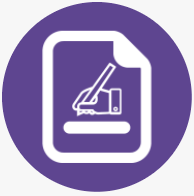
As one of the most difficult tasks a law enforcement officer or a medical professional can perform, delivering death notifications to families is an essential duty in the field of public safety. It is a duty that requires sensitivity, compassion, and professionalism. The primary goal of a death notification is to inform the next of kin of a person’s death and provide them with the necessary support and resources to cope with their loss. However, notifying someone of a loved one’s passing is never an easy task, and it is essential to have a checklist to ensure that every important aspect of the process is addressed.
The following is a death notification checklist that law enforcement officers, medical professionals, and other public safety officials can use to ensure that they provide families with the appropriate support during this difficult time.
- Prepare yourself mentally and emotionally: Before delivering a death notification, it is crucial to prepare yourself mentally and emotionally. You should take the time to reflect on your role in the process and what you hope to achieve from the notification. It is also essential to be aware of your own emotions and how they may affect your ability to deliver the notification in a calm and compassionate manner.
- Identify the next of kin: The first step in delivering a death notification is to identify the next of kin. This person is usually a spouse, parent, or child of the deceased. If possible, it is best to deliver the notification to the next of kin in person. However, if this is not possible, the notification can be delivered over the phone.
- Verify the identity of the next of kin: Once you have identified the next of kin, it is essential to verify their identity. This can be done by asking for identification or asking for information that only the next of kin would know.
- Find a private and comfortable place: It is essential to find a private and comfortable place to deliver the notification. This could be the next of kin’s home, a private room in a hospital, or a quiet corner in a public space. The important thing is to ensure that the next of kin feels safe and comfortable during the notification.
- Ensure that the next of kin is not alone: It is essential to ensure that the next of kin is not alone during the notification. They should have a support system with them, such as a close family member or friend. If they are alone, offer to call someone for them or wait with them until someone arrives.
- Deliver the notification: When delivering the notification, it is important to be clear and direct. Use the person’s name when delivering the news, and avoid using euphemisms such as “passed away” or “gone to a better place.” It is essential to provide the next of kin with as much information as possible, including the cause of death, the time of death, and where the body is located.
- Provide emotional support: After delivering the notification, it is essential to provide emotional support to the next of kin. This could include offering a hug, holding their hand, or simply sitting with them in silence. It is important to let them know that you are there to support them and that they can reach out to you if they need anything.
- Offer practical support: In addition to emotional support, it is also important to offer practical support to the next of kin. This could include arranging for transportation to the hospital or funeral home, contacting a funeral director, or providing information on grief counseling services.
- Follow up: After delivering the notification, it is essential to follow up with the next of kin to ensure that they are coping with their loss. This could be done through a phone call, a visit, or a card. It is important to let them know that they are not alone and that you are there for them.
- Document the notification: After delivering a death notification, it is important to document the notification. This documentation serves as evidence that the notification was delivered, and it can be used in legal proceedings or to provide information to other agencies. The following information should be included in the documentation:
- Date and time of the notification
- Name of the person delivering the notification
- Name of the next of kin
- Relationship of the next of kin to the deceased
- Location where the notification was delivered
- Details of the notification, including what was said and how the next of kin responded
- Any practical support provided to the next of kin
- Any follow-up actions taken, such as arranging for grief counseling or contacting a funeral director
The documentation should be detailed, accurate, and objective. It is important to avoid making assumptions or opinions about the next of kin’s emotional state or behavior. The documentation should be stored securely and kept confidential. It may be necessary to share this information with other agencies or individuals involved in the case, but this should only be done on a need-to-know basis.







